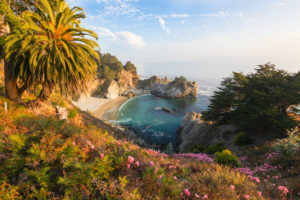
Authors of recent paper argue that the Bureau of Land Management should heed input from tribes.
Dubbed the “30 by 30” goal, President Joseph R. Biden issued an executive order in 2021 to conserve 30 percent of United States land and water by 2030.
In the order, President Biden directed federal agencies to cooperate with tribal governments and other entities to identify lands and waters that qualify for conservation efforts. Shortly after President Biden issued his order, the Bureau of Land Management (BLM)—an agency tasked with protecting public lands—released a report that pledged to aid tribal conservation.
BLM, however, has failed to conserve more federal lands because of its uncoordinated regulation of “critical areas of environmental concern” and failure to heed input from tribal communities adequately, argue Michael Blumm, a professor at Lewis & Clark Law School, and Gregory Allen, a student at Lewis & Clark Law School, in a recent paper.
The Federal Land and Management Policy Act—a law authorizing BLM to protect lands—requires BLM to prioritize, identify, and protect “areas of critical environmental concern” that hold historical, cultural, or environmental value. In addition, Blumm and Allen contend that based on the legislative history of the Federal Land and Management Policy Act, the U.S. Congress intended for BLM to prioritize critical areas when creating land management plans. Given this legal requirement and BLM’s stated policy goals to cooperate with tribal communities, Blumm and Allen argue that BLM should issue regulations that promote tribes’ abilities to nominate federal lands as critical areas.
Blumm and Allen, however, note that BLM’s current critical areas regulation neither explains how critical areas are prioritized nor how the Bureau tailors land management plans for individual critical areas. Instead, BLM’s critical areas rule simply instructs field managers to consider whether an area of land has enough “relevance” and “importance” to warrant classification.
The current rule also requires BLM state directors to consider resource limitations and costs but does not require directors to weigh historical, cultural, and environmental values, as legally mandated. Blumm and Allen observe that regional BLM offices and managers inconsistently and incompletely identify and create plans for critical areas because the rule does not provide a centralized and coordinated process for identifying critical areas. As a result, BLM offices and managers often de-prioritize historical, cultural, and environmental values in favor of other harmful considerations such as mineral mining, oil and gas leasing, and agricultural uses.
Furthermore, Blumm and Allen note that the decentralized process of reporting on critical areas makes it difficult for the public to learn which lands are protected and how they are protected. For example, Blumm and Allen contend that BLM often fails to follow its own guidance, which recommends specific descriptions and remedial plans for areas of critical environmental concern.
Blumm and Allen observe that BLM field offices provide scant descriptions of critical areas, such as labeling them as “historic” without detailing the particular historical values of the land. Moreover, BLM uses conditional language in its land management plans—such as BLM “should” or “will” protect the cultural and environmental features of critical areas—and does not provide concrete language or specific remedial plans to improve critical areas.
To create more centralized and effective protection of critical areas, Blumm and Allen propose that BLM conduct land management plans based on a landscape’s natural boundaries and features. Currently, BLM divides critical area responsibilities along “administrative or political boundaries,” which invites poor coordination between BLM state and field offices. Blumm and Allen also propose that BLM require land managers “to name, describe, and implement management strategies” for critical areas that are more specific than current plans.
For instance, Blumm and Allen explain that BLM rejected a tribal coalition’s recommendation to list over eight million acres of Alaskan land, most of which are “important for tribal subsistence and tribal ancestral homelands.” BLM justified its decision by arguing that Alaska’s current and predicted infrastructure needs—given the state’s remoteness—did not threaten the historical, cultural, or environmental values of the proposed critical area lands. Although BLM conceded that the Alaskan lands’ relevance and importance warranted critical area classification, it still claimed discretion to reject the tribes’ critical area recommendations—a decision that Blumm and Allen argue is inconsistent with statutory requirements.
Given President Biden’s current executive order, and numerous past orders encouraging tribal participation in tribal land management, Blumm and Allen contend that BLM should co-manage critical areas with tribes.
Blumm and Allen highlight the Bears Ears National Monument as a model for co-management. The Trump Administration gutted Obama-era protections for the landscape, but the Biden Administration reinstated these protections to provide committees made up of “State and local governments, tribes, recreational users, local business owners, and private landowners” to regulate the landscape.
Although Blumm and Allen question whether the Bears Ears National Monument committees can successfully co-manage and protect tribal lands, they also consider this governance structure to be the most useful co-management model for the protection of other lands.
But BLM must overcome a congressional hurdle if it does seek to create new rules for critical areas. When BLM attempted to revise its critical areas rule in 2016, Congress overturned BLM’s revisions under the Congressional Review Act—which bars BLM from later issuing rules that are “substantially the same” as the overturned rule. BLM could follow the lead of other agencies, which have gotten around these congressional vetoes by explaining that their rules are not substantially similar to the previously vetoed rules.
Blumm and Allen contend that BLM could issue another critical areas rule because the current Congress is unlikely to overturn the rule again. Although there could still be judicial challenges, a revised critical areas rule could withstand judicial scrutiny so long as BLM explains that its previously overturned rule did not designate critical areas to protect tribal lands.



